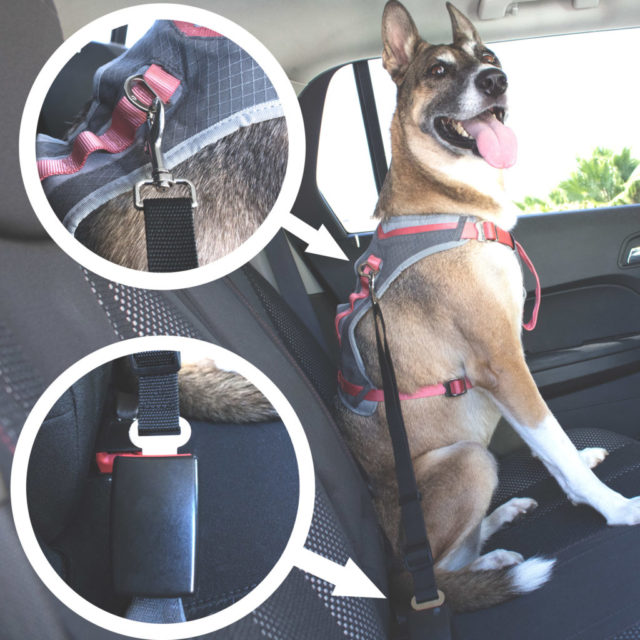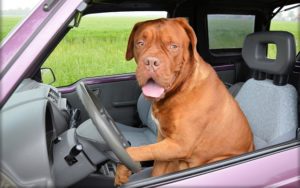
Did you know that even a minor fender-bender can cause catastrophic injuries to a dog?
While we are often able to brace ourselves in anticipation of impact, dogs are not aware of what’s going on outside the car and cannot do the same. Instead, they are thrown forward, posing a serious hazard to themselves and others in the vehicle.
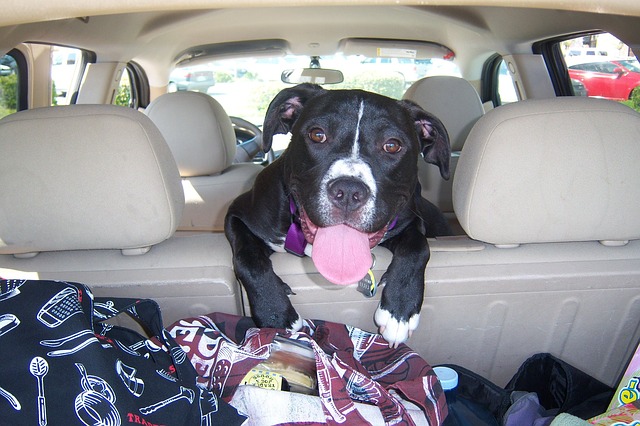
According to a 2011 study conducted by Kurgo and AAA, more than half of dog owners drive with their dog at least once a month, but only 16% of them reported using a canine safety restraint. Additionally, more than half admitted to taking their hands off the wheel to pet, physically restrain, or otherwise tend to their dogs.
Pet owners who allow their dogs to ride unrestrained in the front seat or on their laps are driving with a distraction on par with texting, eating or putting on makeup. The dog may whine, pace, bark or climb on them, causing them to take their focus off the road and greatly increasing their risk of a crash.
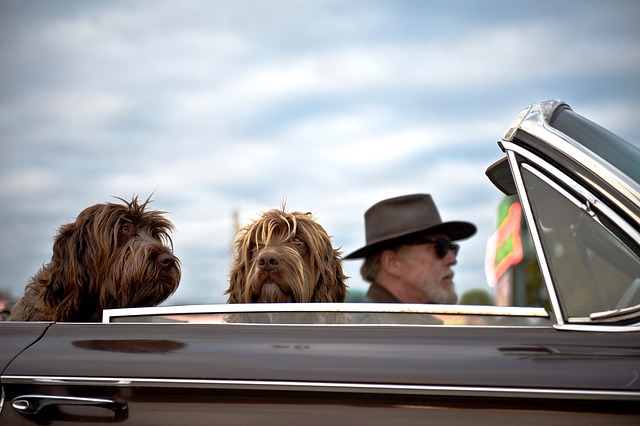
In the United Kingdom, drivers face fines of €5,000 for driving with unrestrained pets as well as potential hikes in their car insurance rates. Unfortunately, most US states do not have such strict regulations for driving with pets.
Several states forbid driving with pets on laps or unrestrained in truck beds, but only New Hampshire, North Dakota and Rhode Island explicitly require dogs to be restrained with seatbelts or crates.
Dogs should not ride in the front seat, even if they are properly restrained due to the risk of injury from the passenger side airbag. Much like children, dogs – especially small ones – can be seriously injured or killed by the force of a deployed airbag.
Transporting a dog in the back seat is safer, but they still must be restrained to prevent serious injury and keep them from bolting in the wake of an accident. There are tethers and barriers designed to keep dogs from climbing into the front seat and distracting the driver, but they are not enough to keep them safe in the event of a collision.
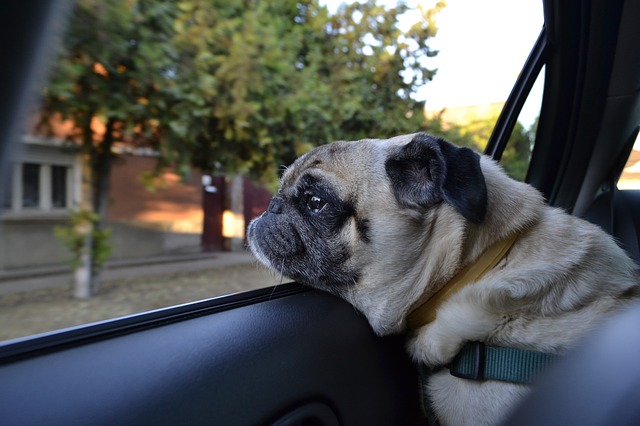
The safest option is to secure your dog in the back seat with a dog seatbelt, car harness, crate or elevated car seat. If, for some reason, your dog must ride in the front seat, be sure to disable the passenger-side airbag, and use one of these approved car safety devices.

When it comes to pickup trucks, dog safety is a bit more difficult. There was a time when it was commonplace for dogs to ride in truck beds, but we now know this is extremely dangerous.
In addition to the lack of protection in a collision, dogs may jump from a moving truck or fall out due to a large bump or swerve. Even if they are not injured in the initial fall, they could be hit by a car or panic, run away and become lost. Even tethering a dog in the back of a truck poses its own risks, including hanging or dragging should the animal jump or fall over the side.

Riding in the open air of a truck bed also exposes dogs to extreme temperatures and weather conditions as well as the risk of debris entering their eyes, nostrils, or mouth – something that is also a hazard for dogs that hang out car windows.
The safest bet for truck owners is to transport the dog in the cab rather than the bed. Many trucks now have extended cabs with backseats where the dog could be crated or fitted with a seatbelt or safety harness.
Many dog owners do not think about auto safety until they experience a frightening event for themselves. Be proactive and ensure your dog’s safety today!
via Whisker Therapy
